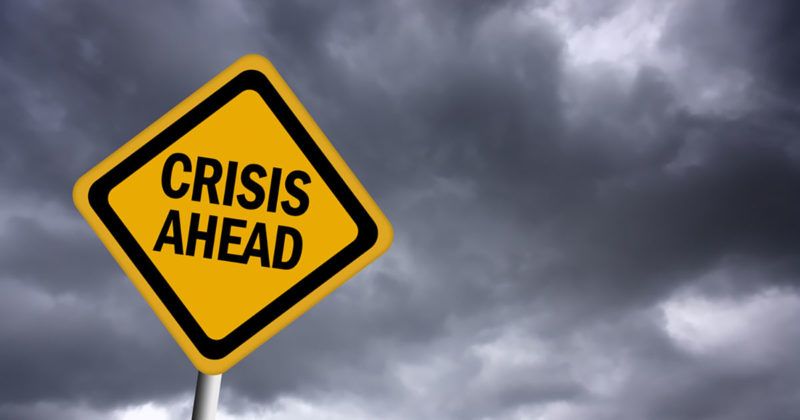
Former US Secretary of State Henry Kissinger once quipped that “there cannot be a crisis next week, my schedule is already full”.
All too often businesses shun crisis preparation because their ‘schedule is full’ and there is no immediate danger in front of them, only to be left scrambling to halt the damage when one finally arrives. This is when mistakes happen, amplifying the harm to your reputation.
COVID-19 has exposed this reality more than any event in our lifetime. The pandemic and subsequent lockdowns that hit in early 2020, sent businesses into panic, highlighting the good, the bad and the ugly when it comes to crisis management.
The unprecedented uncertainty wrought by the virus demanded strength, openness, empathy and action from business leaders communicating to their employees, clients and customers. It was easy to discern the meticulously planned responses from the poorly improvised ones.
Marriott International CEO’s COVID crisis communication masterclass
The video message from Marriott International CEO, Arne Sorenson to his employees at the start of the pandemic, is perhaps the best example of effective communication during the pandemic.
Sorenson was undergoing cancer treatment, but took time to deliver a candid, empathetic and optimistic message to Marriott’s employees during an event without parallels for the damage caused to the hospitality sector.
Through video, Sorenson delivered bad news as close to face-to-face as possible in the circumstances. It was authentic leadership and demonstrated he was in the trenches with his employees.
Sorenson sadly passed away in February this year.
Behavioural scientists believe humans look for both strength and empathy from their leaders in a crisis. If you get the balance and timing wrong, the public can quickly turn against you. It is perhaps why the strong, abrasive former British Prime Minister Winston Churchill was emphatically voted out of office in 1945, just two months after VE Day, in favour of Clement Attlee who offered a more empathetic and hopeful vision of the future at the right time of a national crisis.
AstraZeneca
Of course, there are instances where there is simply nothing you can do to stem the tide of public opinion.
This is exactly what has occurred with AstraZeneca and their COVID-19 vaccine program.
The vaccine has been proven to be highly effective in preventing severe disease and death, and close to 80% effective at stopping symptomatic disease according to data from a US trial.
Yet an incredibly rare blood clotting disorder linked to the vaccine, with an instance rate of 1 in 250,000 in the UK where over 20 million doses of the AstraZeneca vaccine have been administered so far, has led to a media storm around the world, resulting in medical regulators updating their recommendations on usage to exclude certain cohorts.
In Australia, the Australian Technical Advisory Group on Immunisation (ATAGI) was cautious in its risk-benefit analysis, updating its advice for the vaccine to be used only for those over the age of 50.
There is very little AstraZeneca can do to counter the negative public perception that has formed due to rolling 24-hour coverage of every blood clot incident. However, it could have been more proactive and open to the media, offering up the lead scientists who developed the vaccine for interview would be a good start.
The heavy regulated nature of healthcare communications and involvement of the federal government on an issue carrying heightened national importance, means it will be the ATAGI, TGA and government fronting the media, not the pharmaceutical giant itself.
However, AstraZeneca could and is most likely working in the background to ensure it stays one step ahead of the bad headlines, preparing statements and spokespeople, so that it can react quickly when it needs to.
It also has a job on its hands to ensure employees don’t fall foul of advertising regulations in social media outbursts or passing comments at public facing events.
For this it could be putting in place a written playbook, Q&As, educational video clips and more.
Only time will determine AstraZeneca’s success in maintaining the public’s trust in these unprecedented times. An internal wobble could cause irreversible damage.
Dreamworld vs BHP
There are textbook cases throughout history of businesses handling a crisis either disastrously or with skill, including two notable ones in Australia falling within a year of each other.
In 2015, when a mudslide at a BHP dam in Brazil killed 19 people, chief executive Andrew McKenzie reacted quickly to front the media, before flying out to Brazil and apologising to the families of the deceased.
It was the work of a carefully planned and executed crisis response. One that was almost certainly pre-prepared given the high-risk nature of BHP’s work.
Although the response could never alleviate the pain of the families who lost their loved ones, in the court of public opinion BHP avoided a damning verdict that could have left its reputation in tatters.
Fast forward a year and Dreamworld’s owner Ardent Leisure showed how NOT to respond in a crisis, after a tragic accident at the theme park on the Gold Coast killed four people.
In crisis management, success or failure is decided within the first 24-48 hours. Ardent made a number of critical mistakes in this window including:
During a crisis, it helps to work with skilled crisis managers from outside your organisation that can take an objective view on the situation and advise accordingly. Ardent’s obdurate approach, failed to consider the expectations of the public.
For advice on your issues and crisis strategy, schedule a time to speak to our Director & CEO, John Emmerson.
Also read: Why the messenger is as important as the message in healthcare communications